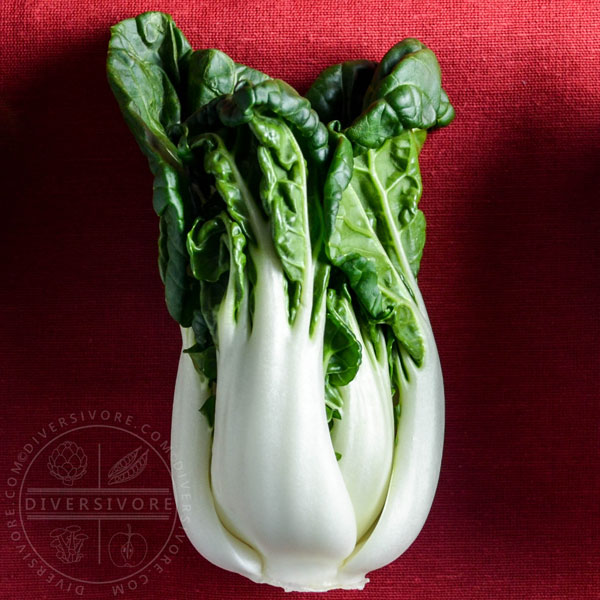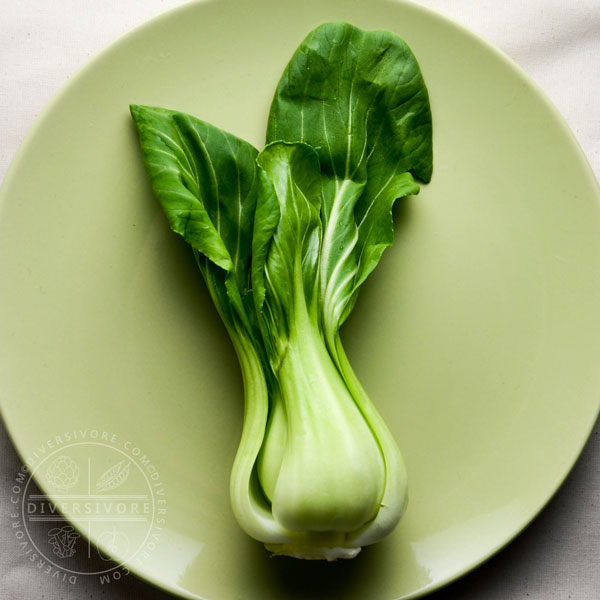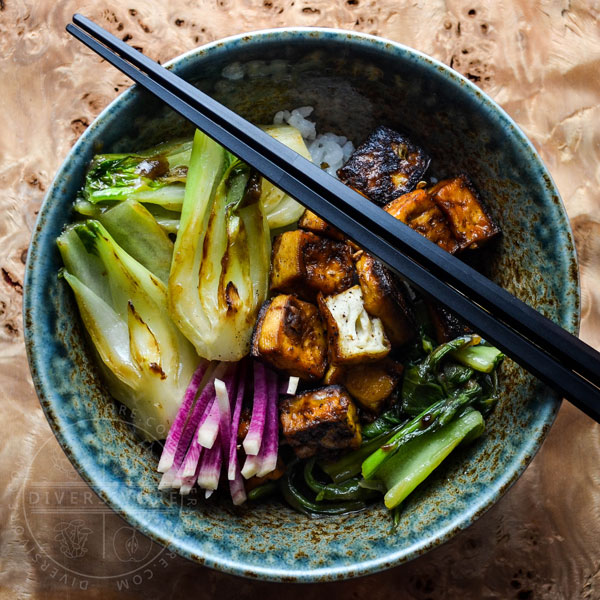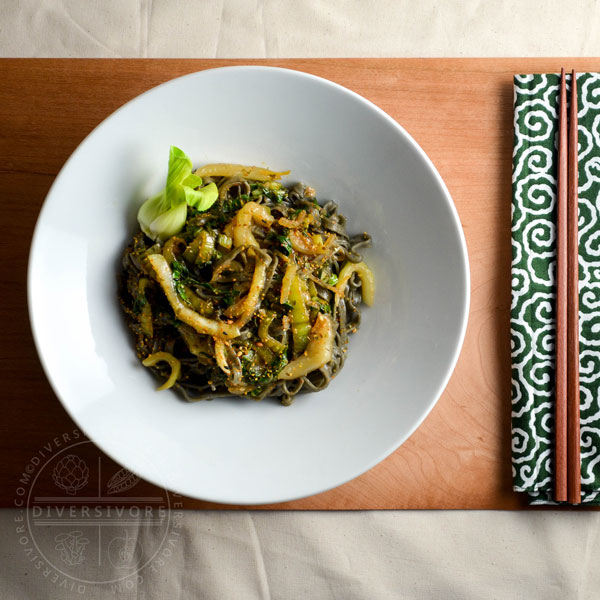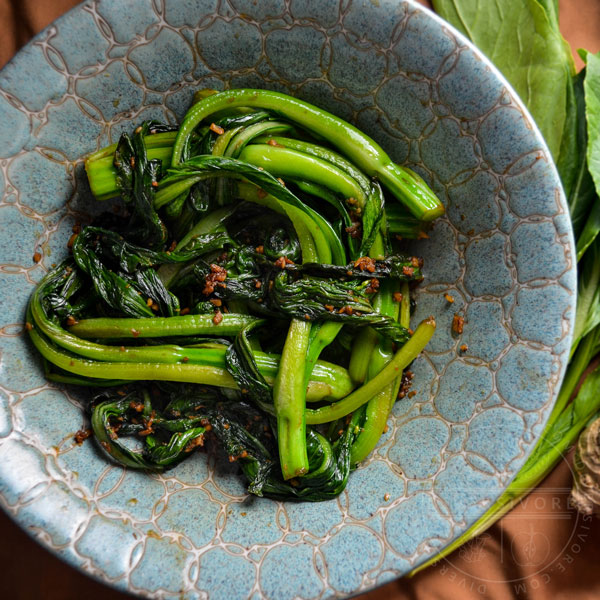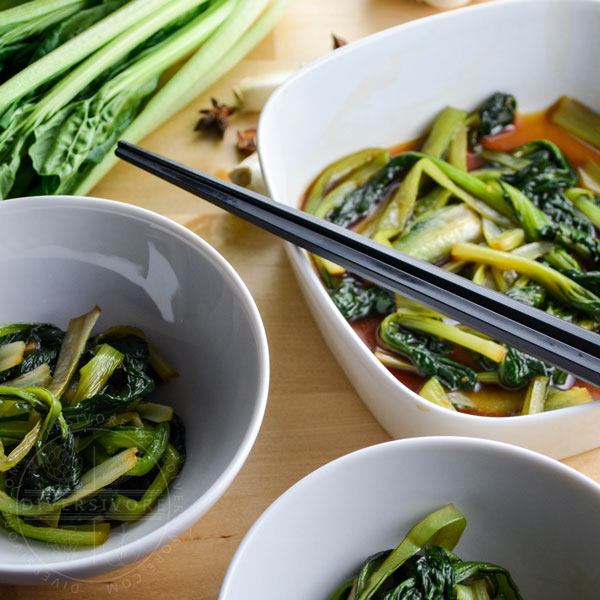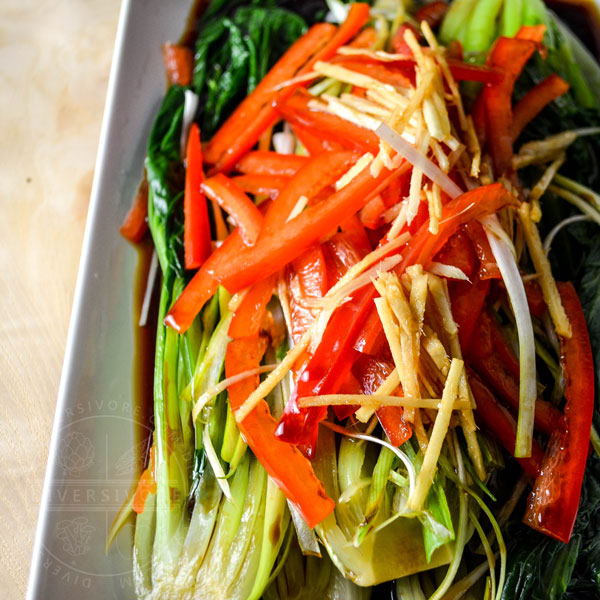How to Find, Choose, & Use
Gai Lan
(Chinese Broccoli)
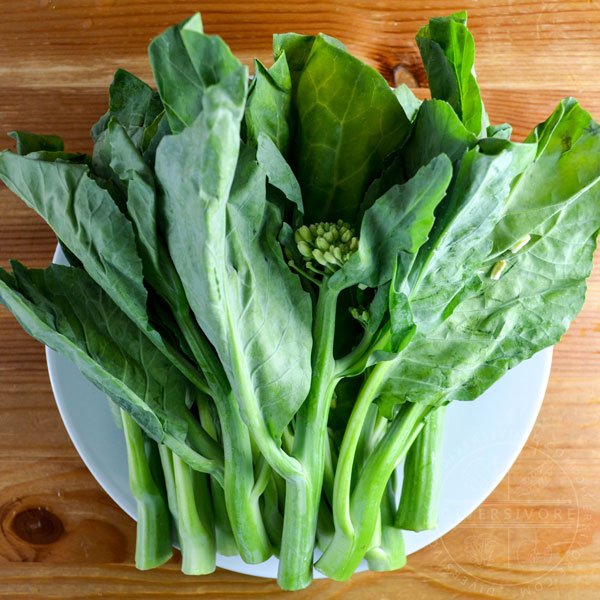
Share this Guide
The Basics
What Is It?
A leafy green, thick-stalked member of the diverse 'wild cabbage' group (Brassica oleracea). Gai lan is more closely related to collard greens, broccoli, cauliflower, cabbage, and kale than it is to bok choy, choy sum, and other Asian greens.
Seasonality
Available YEAR-ROUND, but best in cool seasons.
Flavour Profile
Green/Sweet, slightly bitter; generally similar to broccoli, but with a somewhat more bitter taste.
Other Names
English: Chinese broccoli, Chinese kale, kai-lan
Chinese: 芥蘭 (trad), 芥蘭 (simp) - jièlán (Mandarin), gai lan (Cantonese)
Gai Lan FAQs
Can You Eat Gai Lan Leaves?
Absolutely. They're healthy, easy to cook, and delicious. They do cook faster than the stalks, so you may want to separate them from the particularly thick bottoms and cook them separately for for less time.
Can You Eat Gai Lan Flowers?
Absolutely! The flowers are perfectly edible. It is worth noting however that many vegetables in the cabbage family can become quite bitter after flowering, so you might want to avoid plants that have produced a lot of flowers and/or tall flower stalks.
Are Gai Lan and Yu Choy Different?
Definitely. While they look somewhat similar, yu choy (or choy sum) is a different (though still related) vegetable, with thinner stalks and a more pronounced mustard-like flavour.
Are Gai Lan and Gai Choy Different?
Very! Despite the similar sounding names and the fact that they're both brassicaceous vegetables, the two vegetables are totally different from one another. Gai choy is a large, head-forming Chinese mustard green with a distinctive and pungent 'bite.'
How-To
Find
Chinese and pan-Asian grocery stores generally stock gai lan.
Choose
Look for bright, vibrant greens without obvious yellowing or damaged sections. Small flowers are normal and perfectly fine (and edible).
Prep
Difficulty: Easy - Simply wash the greens and remove any damage and, if necessary, the dry cut ends of the stalks. You may wish to cook leaves and the thick lower stalks separately.
Use
Can be eaten raw, though far more commonly cooked. As with many of its brassicaceous relatives, it's best cooked somewhat lightly.
Store
Short Term: Refrigerate (unwashed, 4-7 days in a breathable plastic bag in the crisper)
Long Term: Blanch in boiling water 2 mins, drain and rinse with cold water, then freeze.
Culinary Info
Flavour Profile
Mild/Sweet/Green - Quite similar to broccoli in many respects, though with a bit more bitterness overall. The taste is relatively distinctive, but still fairly easy to work with.
Substitutions
Broccoli and broccolini are both closely related and excellent substitutes. Rapini (aka broccoli raab/rabe) is a good substitute too, though it's generally more bitter than gai lan. Choy sum is texturally similar, but more mustard-like in flavour.
Cuisines
Gai lan is a popular vegetable in a wide variety of Asian (especially Chinese) dishes. It’s often cooked and served as a green side dish, but it also pairs well with proteins.
Flavour Pairings
Asian ingredients are understandably common, but gai lan actually works quite nicely with any broccoli-friendly flavours. Savoury sauces (e.g. oyster sauce), garlic, ginger, and Szechuan pepper are popular (see below for more).
Varieties
Gai lan tends to be fairly uniform in Western grocery stores, though you may encounter size variations. Large gai lan (~20 cm/8 inches) is common, but smaller and milder 'baby' gai lan can sometimes be found too. There are some attractive purple varieties available to gardeners, though these do not differ in terms of taste.
More Info
Nutrition
Exceptionally high in Vitamins A and C.Nutrition FactsGai Lan - 100 g (3.5 oz)Amount Per ServingCalories 18% Daily Value*Sodium 18mg1%Potassium 259mg7%Carbohydrates 4g1%Fiber 3g13%Protein 2g4%Vitamin A 11200IU224%Vitamin C 87.5mg106%Calcium 20mg2%Iron 0.4mg2%* Percent Daily Values are based on a 2000 calorie diet.Top-To-Tail
The entire above-ground portion of the young plant is eaten, including the leaves and stalks. The small flowers are also edible.
GMO Status
Non-GMO
Health & Science
- Exceptionally healthy and nutrient-dense
- Contains glucosinolates, which are chemical compounds that have demonstrated some cancer-protective benefits at low-to-moderate doses. Exceptionally high doses have been linked to thyroid dysfunction.Organic vs. Conventional
Both organic and conventionally grown choy sum are commercially available, though organic availability is often very limited regionally. It may be found through some niche retailers, or at farmers markets.
Gai Lan Recipes
Share this Guide



